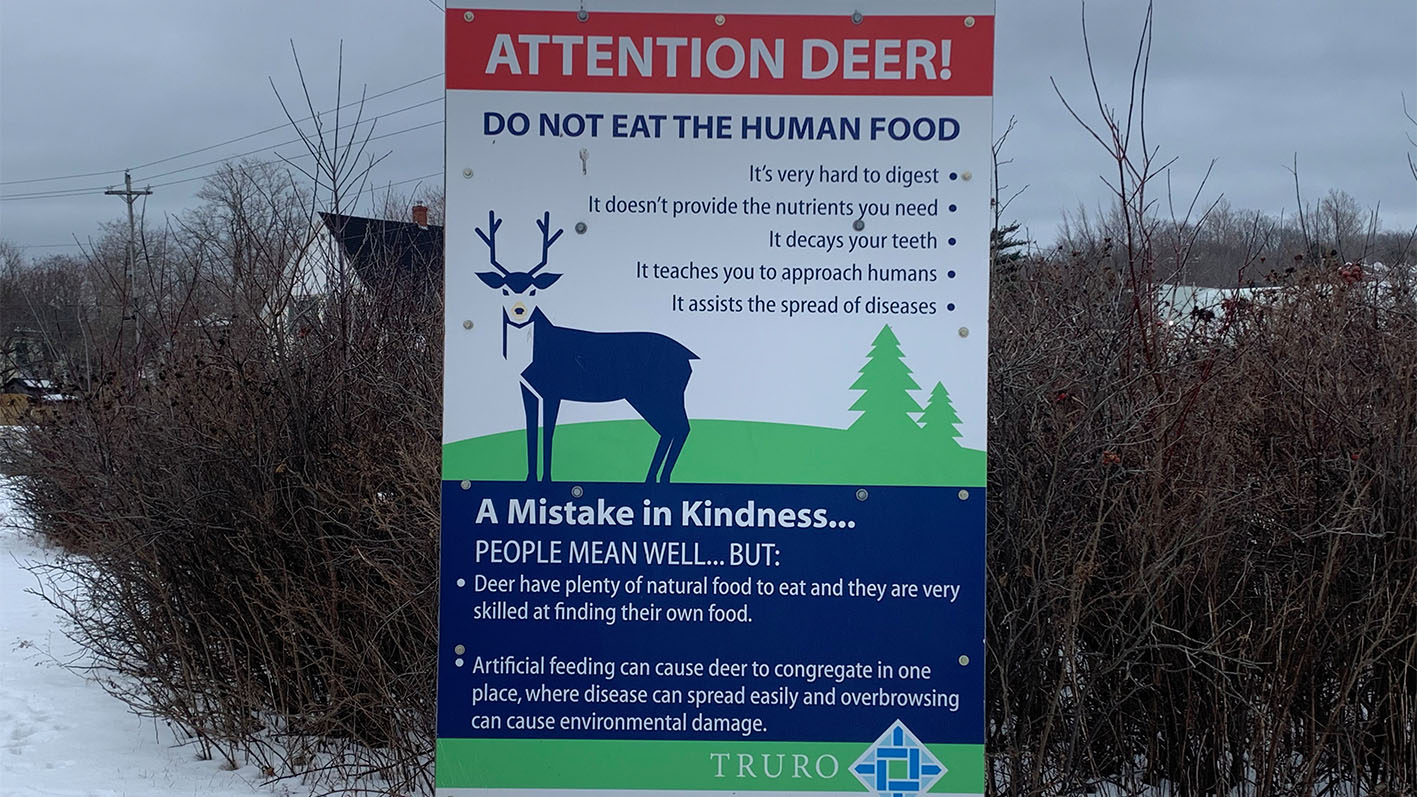Deer oh deer: Truro to create new committee to combat town’s deer population
Council approves the establishment of a deer management strategy, but Mayor Bill Mills is not convinced

caption
This sign advises deer to not eat human food, as it's a dangerous mistake in kindness.Truro’s council is creating a new group to help develop a management strategy for their longtime deer issue.
On Monday, Truro councillors voted in favour of establishing a working group to help develop a deer management strategy — which has been the cause of ongoing debate for the last seven years.
“I hope like hell we’re not talking about this on Jan. 11 2022,” Mayor Bill Mills said during the council meeting, adding that councillors have more faith than he does.
“I’m still hoping for a deer-wasting disease to come to Nova Scotia.”
Most residents do not feel lethal means necessary
The town has been working closely with the Department of Lands and Forestry to collect data and information, according to the Urban Deer Management Process Overview. In 2018, the town permitted non-motorized bow hunting in designated areas in an attempt to reduce the deer population. A survey done in the year prior found that only 25 per cent of respondents felt that lethal means were necessary.
“Death and taxes and now deer has become one of those things we’re going to be with as well,” Coun. Cathy Hinton said. “This issue is not going away.”
According to the process overview, Truro’s deer population grew by 70 per cent between 2017-2020. The Department of Lands and Forestry states that if population reduction and control is the town goal, a managed bow hunt is the “only approach with consistent results.”
Deer contraceptives suggested
Local animal-rights activist Ty Savoy thinks otherwise. Savoy would like to see the province look into deer contraceptives, a method that’s being tested in Oak Bay, B.C., with promising results.
“[Nova Scotia] needs to look at this as a legitimate option — they have an agricultural college right there in Bible Hill, right in Truro,” Savoy said. “They could easily get provincial and federal money if they need it for a test program.”
“It just doesn’t seem like the political will is there,” said Savoy.
In the first year of its trial, the Urban Wildlife Stewardship Society was able to inoculate 60 deer and tag 17 with a GPS tracker. The lasting results are incomparable to the alternative option of a cull, according to a 2017 independent review done in Oak Bay.
The review found that deer culls and non-lethal translocation of deer had no long-term results. Instead, the population was quick to rise again, and relocated deer “simply [moved] in from the outside.”
Resident offered land
In council on Monday, Mills asked that residents come forward in co-operation to help address this issue.
“One landowner in town has offered up two acres behind his property where there are lots and lots of deer,” Mills said. “I’m told we could use that if necessary.”
Mills continued, asking that residents who feel similarly and that have forested land on their property send an email to the committee, because “[They’d] like to talk to you.”
It is unclear how the land is intended to be used in regard to deer control.
When asked, Tracy Hart, the town’s executive assistant, said in an email that “a volunteered property does not necessarily mean a hunt would happen on that particular property.”
Hart said that should the council approve a managed hunt, various sites would be assessed —including volunteered private property.
The working group will review and modify management actions as they are implemented and consider their impacts on deer. The group does not have an official membership at this point, although it will consist of town staff, lands and forestry officials, members of council as well as external interest groups.
About the author
Brooklyn Connolly
Brooklyn is a journalist based in Halifax, N.S. She's passionate about all things health, policy, and education. Her work has been seen in the...

J
John Fraser